| SAR Rank | Phone Model | Simultaneous Hotspot SAR | % Legal Limit |
|---|---|---|---|
1st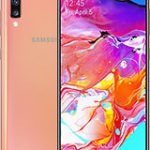 | Samsung Galaxy A70 | 0.76 W/kg | 47.5% |
2nd | Samsung Galaxy S9 | 0.95 W/kg | 59.38% |
3rd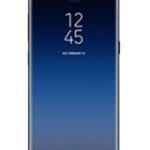 | Samsung Galaxy S9 Plus | 1.04 W/kg | 65% |
4th | Samsung Galaxy S8 Plus | 1.10 W/kg | 68.75% |
5th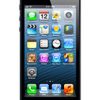 | Apple iPhone 5 | 1.13 W/kg | 70.63% |
| 6th | Google Pixel 2 | 1.14 W/kg | 71.25% |
7th | Apple iPhone 7 | 1.16 W/kg | 72.5% |
Tied 7th | Apple iPhone 14 | 1.16 W/kg | 72.5% |
| 8th | Google Pixel 2 XL | 1.18 W/kg | 73.75% |
9th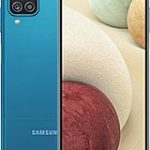 | Samsung Galaxy A12 | 1.19 W/kg | 74.38% |
| SAR Rank | Phone Model | Simultaneous Hotspot SAR | % Legal Limit |
Tied 9th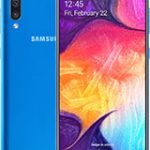 | Samsung Galaxy A50 | 1.19 W/kg | 74.38% |
10th | Samsung Galaxy S21 FE | 1.24 W/kg | 77.5% |
11th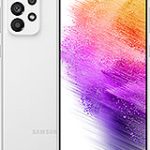 | SAMSUNG GALAXY A73 | 1.27 W/kg | 79.38% |
12th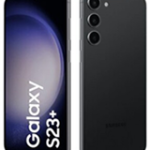 | Samsung Galaxy S23 Plus | 1.28 W/kg | 80% |
Tied 12th | SAMSUNG GALAXY A14 5G | 1.28 W/kg | 80% |
13th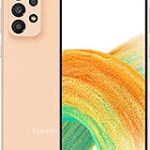 | Samsung Galaxy A33 5G | 1.29 W/kg | 80.63% |
14th | SAMSUNG GALAXY A51 5G | 1.35 W/kg | 84.38% |
Tied 14th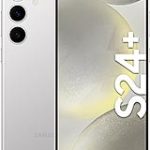 | Samsung Galaxy S24 Plus | 1.35 W/kg | 84.38% |
15th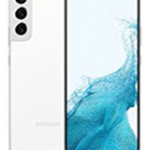 | Samsung Galaxy S23 | 1.36 W/kg | 85% |
16th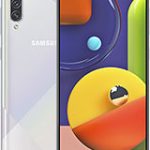 | Samsung Galaxy A50S | 1.38 W/kg | 86.25% |
| SAR Rank | Phone Model | Simultaneous Hotspot SAR | % Legal Limit |
17th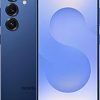 | Samsung Galaxy S25 | 1.39 W/kg | 86.88% |
18th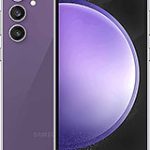 | Samsung Galaxy S23 Fe | 1.40 W/kg | 87.5% |
Tied 18th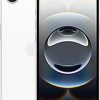 | Apple iPhone 16e | 1.40 W/kg | 87.5% |
19th | Samsung Galaxy A15 | 1.44 W/kg | 90% |
Tied 19th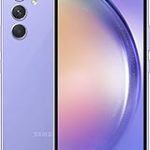 | Samsung Galaxy A54 5G | 1.44 W/kg | 90% |
Tied 19th![apple-iphone-13-pro[1]](https://www.rfsafe.com/wp-content/uploads/2020/12/apple-iphone-13-pro1-66x66.jpg) | Apple iPhone 13 Pro | 1.44 W/kg | 90% |
Tied 19th | Apple iPhone 13 Pro Max | 1.44 W/kg | 90% |
Tied 19th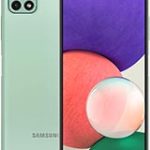 | SAMSUNG GALAXY A22 5G | 1.44 W/kg | 90% |
20th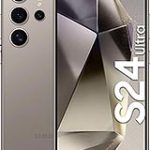 | Samsung Galaxy S24 Ultra | 1.45 W/kg | 90.63% |
21st![apple-iphone-13-mini[1]](https://www.rfsafe.com/wp-content/uploads/2020/12/apple-iphone-13-mini1-66x66.jpg) | Apple iPhone 13 Mini | 1.46 W/kg | 91.25% |
| SAR Rank | Phone Model | Simultaneous Hotspot SAR | % Legal Limit |
| 22nd | Google Pixel 5A 5G | 1.47 W/kg | 91.88% |
23rd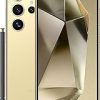 | Samsung Galaxy S25 Ultra | 1.48 W/kg | 92.5% |
Tied 23rd | Apple iPhone 11 Pro | 1.48 W/kg | 92.5% |
Tied 23rd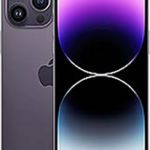 | Apple iPhone 15 Pro Max | 1.48 W/kg | 92.5% |
24th | Apple iPhone 15 | 1.49 W/kg | 93.13% |
25th | Apple iPhone 14 Pro Max | 1.50 W/kg | 93.75% |
Tied 25th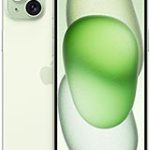 | Apple iPhone 15 Plus | 1.50 W/kg | 93.75% |
26th![apple-iphone-13[1]](https://www.rfsafe.com/wp-content/uploads/2020/12/apple-iphone-131-66x66.jpg) | Apple iPhone 13 | 1.51 W/kg | 94.38% |
27th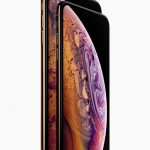 | Apple iPhone XS MAX | 1.52 W/kg | 95% |
Tied 27th | Apple iPhone 11 | 1.52 W/kg | 95% |
| SAR Rank | Phone Model | Simultaneous Hotspot SAR | % Legal Limit |
| 28th | GOOGLE PIXEL 7 PRO | 1.53 W/kg | 95.63% |
Tied 28th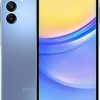 | Samsung Galaxy A15 5G | 1.53 W/kg | 95.63% |
Tied 28th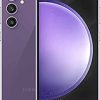 | Samsung Galaxy S24 Fe | 1.53 W/kg | 95.63% |
Tied 28th | Apple iPhone Xs | 1.53 W/kg | 95.63% |
Tied 28th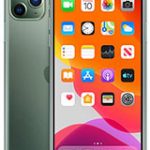 | Apple iPhone 11 Pro Max | 1.53 W/kg | 95.63% |
Tied 28th | Apple iPhone SE 3 (2022) | 1.53 W/kg | 95.63% |
Tied 28th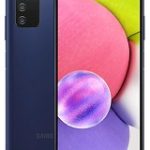 | Samsung Galaxy A03s | 1.53 W/kg | 95.63% |
29th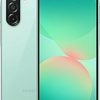 | Samsung Galaxy A26 | 1.54 W/kg | 96.25% |
Tied 29th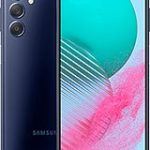 | Samsung Galaxy M54 | 1.54 W/kg | 96.25% |
Tied 29th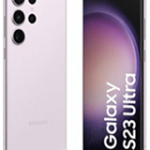 | Samsung Galaxy S23 Ultra | 1.54 W/kg | 96.25% |
| SAR Rank | Phone Model | Simultaneous Hotspot SAR | % Legal Limit |
Tied 29th | Apple iPhone 12 Pro | 1.54 W/kg | 96.25% |
Tied 29th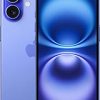 | Apple iPhone 16 | 1.54 W/kg | 96.25% |
| 30th | GOOGLE PIXEL 6 PRO | 1.55 W/kg | 96.88% |
Tied 30th | Samsung Galaxy A14 | 1.55 W/kg | 96.88% |
Tied 30th | Samsung Galaxy A16 5G | 1.55 W/kg | 96.88% |
Tied 30th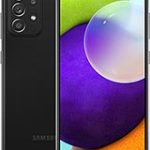 | SAMSUNG GALAXY A52 | 1.55 W/kg | 96.88% |
Tied 30th | Apple iPhone 12 | 1.55 W/kg | 96.88% |
Tied 30th | Apple iPhone 16 Pro Max | 1.55 W/kg | 96.88% |
Tied 30th | Apple iPhone 16 Plus | 1.55 W/kg | 96.88% |
31st | Apple iPhone 6s Plus | 1.56 W/kg | 97.5% |
| SAR Rank | Phone Model | Simultaneous Hotspot SAR | % Legal Limit |
Tied 31st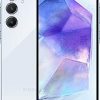 | Samsung Galaxy A55 | 1.56 W/kg | 97.5% |
Tied 31st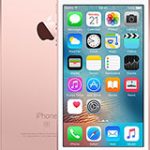 | Apple iPhone SE | 1.56 W/kg | 97.5% |
Tied 31st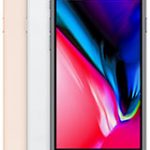 | Apple iPhone 8 | 1.56 W/kg | 97.5% |
Tied 31st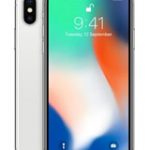 | Apple iPhone X | 1.56 W/kg | 97.5% |
Tied 31st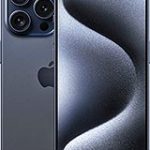 | Apple iPhone 15 Pro | 1.56 W/kg | 97.5% |
32nd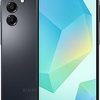 | Samsung Galaxy A16 | 1.57 W/kg | 98.13% |
Tied 32nd | Samsung Galaxy A23 5G | 1.57 W/kg | 98.13% |
Tied 32nd | Samsung Galaxy A34 | 1.57 W/kg | 98.13% |
Tied 32nd![samsung-galaxy-s22-plus-5g[1]](https://www.rfsafe.com/wp-content/uploads/2021/12/samsung-galaxy-s22-plus-5g1-66x66.jpg) | Samsung Galaxy S22 Plus | 1.57 W/kg | 98.13% |
Tied 32nd | Apple iPhone 12 Pro Max | 1.57 W/kg | 98.13% |
| SAR Rank | Phone Model | Simultaneous Hotspot SAR | % Legal Limit |
Tied 32nd | Apple iPhone 14 Pro | 1.57 W/kg | 98.13% |
| 33rd | Google Pixel 5 | 1.58 W/kg | 98.75% |
Tied 33rd | Samsung Galaxy A13 | 1.58 W/kg | 98.75% |
Tied 33rd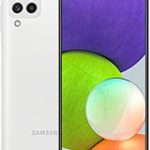 | SAMSUNG GALAXY A22 | 1.58 W/kg | 98.75% |
Tied 33rd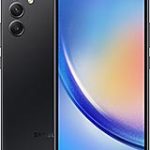 | Samsung Galaxy A24 4G | 1.58 W/kg | 98.75% |
Tied 33rd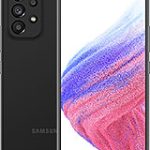 | SAMSUNG GALAXY A53 5G | 1.58 W/kg | 98.75% |
Tied 33rd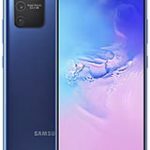 | Samsung Galaxy S10 Lite | 1.58 W/kg | 98.75% |
Tied 33rd | Samsung Galaxy S21 | 1.58 W/kg | 98.75% |
Tied 33rd | Samsung Galaxy S22 Ultra | 1.58 W/kg | 98.75% |
Tied 33rd | Apple iPhone 7 Plus | 1.58 W/kg | 98.75% |
| SAR Rank | Phone Model | Simultaneous Hotspot SAR | % Legal Limit |
Tied 33rd | Apple iPhone 14 PLUS | 1.58 W/kg | 98.75% |
Tied 33rd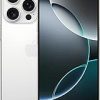 | Apple iPhone 16 Pro | 1.58 W/kg | 98.75% |
| 34th | Google Pixel 8 Pro | 1.59 W/kg | 99.38% |
| Tied 34th | Google Pixel 8a | 1.59 W/kg | 99.38% |
| Tied 34th | Google Pixel 6A | 1.59 W/kg | 99.38% |
| Tied 34th | Google Pixel 9 Pro | 1.59 W/kg | 99.38% |
| Tied 34th | Google Pixel 9 Pro Fold | 1.59 W/kg | 99.38% |
| Tied 34th | Google Pixel 7a | 1.59 W/kg | 99.38% |
| Tied 34th | Google Pixel 8 | 1.59 W/kg | 99.38% |
| Tied 34th | Google Pixel 9 | 1.59 W/kg | 99.38% |
| SAR Rank | Phone Model | Simultaneous Hotspot SAR | % Legal Limit |
| Tied 34th | Google Pixel 9 Pro Xl | 1.59 W/kg | 99.38% |
Tied 34th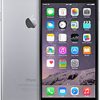 | Apple iPhone 6 Plus | 1.59 W/kg | 99.38% |
Tied 34th | Samsung Galaxy A23 4G | 1.59 W/kg | 99.38% |
Tied 34th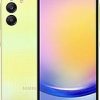 | Samsung Galaxy A25 | 1.59 W/kg | 99.38% |
Tied 34th | SAMSUNG GALAXY A32 5G | 1.59 W/kg | 99.38% |
Tied 34th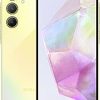 | Samsung Galaxy A35 | 1.59 W/kg | 99.38% |
Tied 34th | Samsung Galaxy A36 | 1.59 W/kg | 99.38% |
Tied 34th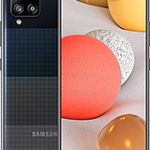 | SAMSUNG GALAXY A42 5G | 1.59 W/kg | 99.38% |
Tied 34th | SAMSUNG GALAXY A72 | 1.59 W/kg | 99.38% |
Tied 34th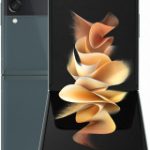 | Samsung Galaxy Z Flip3 | 1.59 W/kg | 99.38% |
| SAR Rank | Phone Model | Simultaneous Hotspot SAR | % Legal Limit |
Tied 34th | Samsung Galaxy Z Flip4 | 1.59 W/kg | 99.38% |
Tied 34th | Samsung Galaxy S20 FE | 1.59 W/kg | 99.38% |
Tied 34th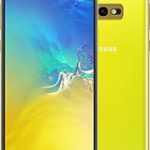 | Samsung Galaxy S10e | 1.59 W/kg | 99.38% |
Tied 34th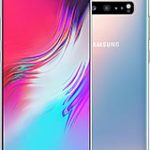 | Samsung Galaxy S10 5G | 1.59 W/kg | 99.38% |
Tied 34th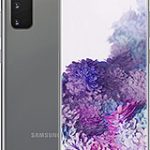 | Samsung Galaxy S20 | 1.59 W/kg | 99.38% |
Tied 34th | Samsung Galaxy S20 Plus | 1.59 W/kg | 99.38% |
Tied 34th![samsung-galaxy-s21-plus-5g-[1]](https://www.rfsafe.com/wp-content/uploads/2020/12/samsung-galaxy-s21-plus-5g-1-66x66.jpg) | Samsung Galaxy S21 PLUS | 1.59 W/kg | 99.38% |
Tied 34th | Samsung Galaxy S21 Ultra | 1.59 W/kg | 99.38% |
Tied 34th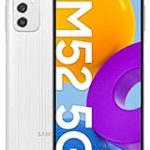 | SAMSUNG GALAXY M52 5G | 1.59 W/kg | 99.38% |
Tied 34th | Samsung Galaxy S22 | 1.59 W/kg | 99.38% |
| SAR Rank | Phone Model | Simultaneous Hotspot SAR | % Legal Limit |
Tied 34th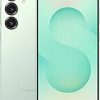 | Samsung Galaxy S25 Plus | 1.59 W/kg | 99.38% |
Tied 34th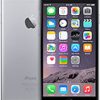 | Apple iPhone 6 | 1.59 W/kg | 99.38% |
Tied 34th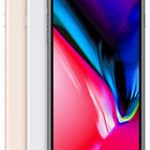 | Apple iPhone 8 Plus | 1.59 W/kg | 99.38% |
Tied 34th | Apple iPhone 12 Mini | 1.59 W/kg | 99.38% |
35th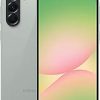 | Samsung Galaxy A56 | 1.60 W/kg | 100% |
36th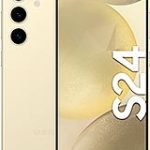 | Samsung Galaxy S24 | 3.10 W/kg | 193.75% |
About Simultaneous Hotspot SAR: Understanding SAR Testing for Mobile Devices
Mobile devices have become an integral part of our daily lives, and it’s hard to imagine a world without them. However, concerns have been raised about the potential health risks associated with long-term exposure to radiofrequency radiation emitted by these devices. This is where Specific Absorption Rate (SAR) testing comes in, which measures the amount of radiation absorbed by the body when using a mobile device. In this article, we will be discussing SAR testing, specifically the simultaneous hotspot SAR value, which is a measure of the amount of radiation absorbed by the body when using a mobile device with multiple antennas transmitting at the same time.
History of SAR Testing
SAR testing is a technique that measures the amount of electromagnetic energy absorbed by the human body when using a wireless device. The practice dates back to the 1980s when researchers began investigating the potential health effects of cell phone radiation. At the time, there was a lot of uncertainty about the long-term effects of exposure to electromagnetic radiation. Some researchers were concerned that the radiation emitted by cell phones could cause cancer, while others argued that the radiation levels were too low to have any significant impact on human health.
To settle the debate, researchers developed a standard method for measuring SAR, which involved using a phantom head that simulated the absorption characteristics of human tissue. The phantom head became known as the Specific Anthropomorphic Mannequin (SAM), and it’s still used today for SAR testing.
Understanding SAR Testing
The SAR value is a measure of the rate at which RF energy is absorbed by the body tissue closest to the phone’s antenna. It is measured in watts per kilogram (W/kg). SAR testing involves placing a mobile phone in different positions on the SAM phantom, including the cheek and tilt positions. The mobile phone is then exposed to an RF signal at its highest power level, and the SAR value is measured.
The SAR measurement is done using a specific test protocol that involves a reference measurement, an area scan, a zoom scan, and a drift measurement. During the area scan, the SAR value is measured in a grid pattern across the entire body region covered by the mobile phone. The zoom scan is a more precise measurement that measures a small cube around the maximum SAR measured during the area scan. The reference measurement and drift measurement are done to ensure that the power from the device does not drift during the measurement.
Simultaneous Hotspot SAR Values
The simultaneous hotspot SAR value is a measure of the amount of radiation absorbed by the body when using a mobile device with multiple antennas transmitting at the same time. This is particularly important because multiple antennas can produce a higher level of radiation than a single antenna.
To measure the simultaneous hotspot SAR value, SAR testing is performed on each antenna separately, and the highest reported SAR result is selected for each test position. These results are then summed together, assuming that the hotspots are co-located, to determine if the simultaneous SAR is within the safety limit. In the USA, the safety limit for simultaneous hotspot SAR is 1.6 W/kg.
If the simultaneous hotspot SAR value is over the limit, the two results are summed again using the Combined Fast SAR feature of ComSEMCAD X software. This is because the hotspots of the two summed measurements may not be exactly on top of each other, so using the software can produce a more accurate result. If the final value is within the safety limit, the phone is considered safe for use.
FAQs
- How can I find out the SAR value of my mobile phone?
You can usually find the SAR value of your mobile phone in the phone’s user manual or on the manufacturer’s website. Alternatively, you can search for your phone’s make and model on the FCC’s database of SAR values.
- What is the difference between SAR and simultaneous SAR values?
SAR values measure the amount of RF energy absorbed by the body from a single transmitter, while simultaneous SAR values measure the amount of RF energy absorbed by the body from multiple transmitters operating simultaneously.
- What is the safety limit for SAR values in the USA?
The safety limit for SAR values in the USA is 1.6 W/kg.
- Are low SAR values always better?
While lower SAR values generally indicate lower levels of RF energy absorbed by the body, it is important to also consider other factors such as duration of use, distance from the body, and specific absorption rates of different tissues when assessing the potential health effects of mobile phone use.
Understanding Simultaneous Hotspot SAR: A Comprehensive Guide
Simultaneous Hotspot SAR and Its Effects on Human Health: What You Need to Know
The Importance of Simultaneous Hotspot SAR Testing for Wireless Devices
Navigating the World of Simultaneous Hotspot SAR: A User’s Guide
Simultaneous Hotspot SAR and Wireless Technologies: What You Should Consider